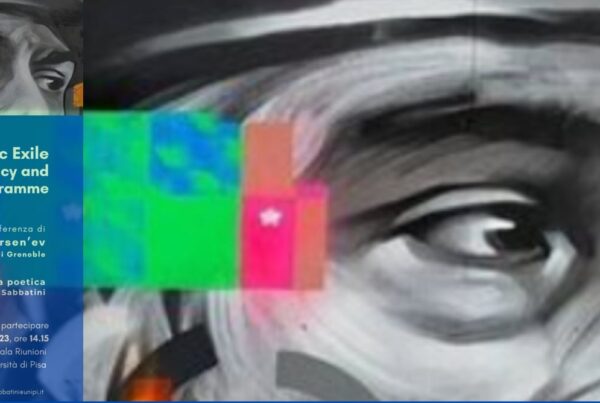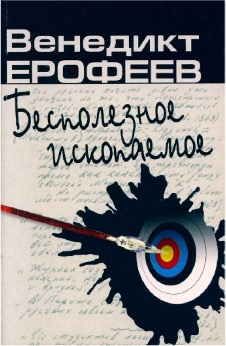
The most famous activists of Russian feminist dissindet movment.
From the right: Tatiana Mamonova, Nataliia Malakhovskaia, Tatiana Goricheva, Iuliia Voznesenskaia.
source: “Ms”. November 1980.
The Russian dissident feminist movement arose in response to the lack of representation of women’s needs by a state that used full female emancipation as a point of pride on the international stage. As known, Russian feminism did not originate with the movements Mariia and Zhenshchina i Rossiia that emerged during the Brezhnev stagnation period, but it is rooted in a rich tradition of figures, personalities and approaches, which, it should be noted, followed a different historical evolution from the Western one and predate the October Revolution (cf. Nechemias, Noonan 2001; Pushkareva 2002:web). Hence the need to identify the movements and their respective almanacs Mariia and Zhenshchina i Rossiia under the umbrella term of dissident feminist movements, which, however, does not solve their profound ideological divergences and the problematic nature of a generic application of the concept of feminism without adopting a transnational feminist perspective to describe the movements in question, especially in light of the controversial content proposed mainly by Mariia (cf. Talaver 2020:16-17; Talaver 2017:58).
Compared to the mentioned movements, the use of the label of feminism is far from consistent, which can be associated with the negative connotation acquired by feminism in Russia, even during the revolutionary era. The term feminism was associated with a bourgeois movement interested in obtaining sociopolitical rights, which apparently the Bol’shchevik government had already been able to offer extensively, and with the danger of internal political fragmentation within the party.
However, the Bol’shchevik government adopted extremely modern measures concerning women’s rights. In this regard, Rochelle Ruthchild mentions how the feminist demonstrations of 1917 pushed the Provisional Government to grant women the right to vote and equal civil rights through the 1918 constitution, and how it granted women, for the first time in world history, the right to abortion in 1920. The government worked to combat female illiteracy (which affected about 80% of the female population), encouraged women’s presence in high-skilled jobs, and supported the participation of young women in the Komsomol, although it did not always achieve the desired outcomes (cf. Wood 2017: 13-48). The state policy focused entirely on the radical social transformation of women’s roles in society, encouraging their participation in industrial production and politics, which were essential for large-scale industrial production and the creation of a “new woman” in a socialist society. The debate on women’s rights, however, overlooked the topic of sex education and did not envision gender equality based on the valorization of their differences.
Zhenshchina i Rossiia emerged as a movement that communicated with the West and partly adopted the terminology of Western feminism of that time. The movement challenges the phallocentric structure of Soviet society, emphasizing how gender disparity and resulting violence are elements, albeit silenced, highly prevalent in the social context they refer to. It also takes a Marxist stance, legitimizing efforts made by the Bol’shchevik government in terms of women’s emancipation and identifying Stalin’s rise as a disruption of this path to emancipation (cf. Redaktsiia almanakha, 1980: 15).
Zhenshchina i Rossiia was published in samizdat on December 10, 1979. Some representatives of the French feminist group MLF (Mouvement de libération des femmes) visited the editorial board of Zhenshchina i Rossiia in Leningrad in January 1980, and these encounters ended with the publication of the almanac in tamizdat in Paris in the same year (cf. Fouque 1979: web). The publishing house Des Femmes Hebdo also supported Tatiana Mamonova, the almanac editor-in-chief, by creating a global appeal to support the emigration of at-risk Russian activists and raise public awareness of human rights violations suffered by participants in the movement, including Mamonova.
In commenting on the editorial history of the almanac in France, Anna Sidorevich highlights the attempt of French feminists to, unsuccessfully, include the Russian feminist movement among Western second-wave feminist movements (cf. Sidorevich 2020: 1996). In this regard, the scholar describes the reaction of French feminists to the publication of Zhenshchina i Rossiia, including some objections to Goricheva religious text, Raduisiia Slez Evinykh izbavlenie, and the ones by Natalia Malakhovskaia and Tat’iana Mamonova (under the pseudonym R. Batalova), which depicted female sexuality as sinful and tormented by “diseases” such as menstruation and menopause.
The almanac was partially translated and disseminated by the editors of the Italian feminist newspaper Effe in January 1980, which proves the transnational solidarity among feminist groups of that time. According to Rochelle Ruthchild, Tat’iana Mamonova, was familiar with Western feminist theory and terminology and introduced it to other participants (cf. Ruthchild 2017:104). Concepts such as patriarchy, phallocracy, and self-determination are prevalent in the almanac introduction, which also refers to the issue of sexism as inherent in Russian culture and language. However, these issues were considered superficial by the Leningrad intelligentsia, to the point of dismissing the women’s rights movement as futile and useless. This hostility towards women’s rights activism can be attributed, in addition to misogyny, to the aforementioned skepticism towards the concept of feminism in Russia.
Zhenshchina i Rossiia was created as a collection of independent texts (hence the definition of almanac), such as poetry and prose works, a translation by Elena Shvarts, accounts from female prison camps, and essays addressing the role of patriarchy and sexism in the living conditions of Russian women. Special attention is given to the condition of maternity wards and abortion clinics, overcrowded and in poor hygienic conditions. The almanac presents significant ideological pluralism, considering Tatiana Mamonova’s aversion to religion and the inclusion of a piece by Tatiana Goricheva on the Virgin Mary as a personification of the feminine principle and as a reference model, which will be fundamental in Mariia. Tatiana Mamonova, on the other hand, privileges topics such as lesbianism, female sexuality, and masturbation, which were generally considered inappropriate, especially when discussed from a female perspective.
Mariia also proceeds from a critique of women’s condition in Soviet Russia, questioning its materialist framework. The almanac was compiled in samizdat in the spring of 1980, leading to the forced expulsion of the editors, who continued their activities in the form of tamizdat and were in touch with remaining activists in the homeland. Tatiana Goricheva’s essay Ved’my v kosmose (cf. Goricheva: 1981, 9-13) can be regarded as the group’s ideological manifesto, in which religion plays a prominent role. Female emancipation, in this sense, can occur on an ontological and spiritual level through the rediscovery of religious values that can reconnect men and women to the two original principles of masculine and feminine. In this regard, Goricheva openly discusses Simone de Beauvoir’s theory citing her famous statement “One is not born, but rather becomes, a woman” (cf. de Beauvoir 2013: 293) and then overturning its meaning; while de Beauvoir ruled out any biological determinism regarding sex and argued the historical/social context determines what is described as gender (cf. Butler 1990), Goricheva argues the opposite. Those features pertaining to the male and female sexes are naturally determined.
The flattening of these differences predicted by the emancipatory model of the Soviet state has therefore led to a feminization of the masculine, characterized by strong passivity in political and family life, and masculinization of the feminine. The totalitarian nature of the Soviet state adds an additional obstacle to the achievement of individual self-determination. Goricheva describes the model of masculinization of the feminine with the term “femina sovietica”: a stern and disheveled woman who reaches the heights of her career by holding state roles that make her complicit in the violence of the regime, finding its pinnacle in the first “witch” who flew into space, Valentina Tereshkova (cf. Goricheva 1981: 11). The group “Mariia” opposes to said image of femininity that of the Virgin Mary, characterized by kindness, patience, self-sacrifice, and the ability to act for the sake of humanity. In Orthodox Christianity suffering represents the first step on the path to redemption; women, in this sense, become the privileged intermediaries between God and the earth, martyrical figures capable of spreading the message of divine love, opposing the apocalyptic forces of the regime (cf. Mariia Club 1981: 8). The idea of femininity shaped the group political activism as anti-Soviet, nonviolent, and strongly opposed to the invasion of the Soviet Union in Afghanistan. In this regard, the activists strongly opposed the exportation of the Russian emancipatory model, which would not have taken into account the actual needs of Afghan women and would have compromised an autonomous path of self-determination (cf. Mariia Club 1982: 24). The group “Mariia” also supported the Polish trade union Solidarność and the creation of a neo-feminist movement in Poland (cf. Gveiman 1982: 92).
Mariia also focuses on the motherhood as a right denied to women due to precarious housing and work conditions in Russia. As highlighted by Helena Goscilo and Elena Vassilieva, this attention to motherhood is associated with the public debate on the fertility decline, which was regarded as a consequence of the feminization of men and the masculinization of women, i.e., the “mixing” of gender roles (cf. Goscilo 1991: xx-xxi; Vassilieva 2003: 80).
Valentina Bagozzi
[30th June 2025]
Bibliography
- 1979: Naissance en URSS d’un Mouvement de libération des femmes, regia di Des Femmes Filment, Paris, 2019. https://www.youtube.com/watch?v=pdXvCS4iqSc&t=5s&ab_channel=%D0%9C%D0%B5%D0%B4%D0%B8%D0%B0%D0%B7%D0%BE%D0%BD%D0%B0, online (last accessed: 29/01/2021).
- Butler J., Gender trouble. Feminism and the subversion of identity, Routledge 1990.
- Klub Mariia, Diskussiia na temu: feminsim i marksism, “Mariia”, 1 (1981): 19-22.
- Klub Mariia, K zhenshchinam Rossii, “Mariia”, 1 (1981): 7-9.
- Klub Mariia, Klub Mariia protiv okkupacii Afganistana, “Mariia”, 2 (1982): 11-13.
- Klub Mariia, Soldinarnost’ s solidarnost’iu, “Mariia”, 2 (1982): 3-9.
- De Beauvoir S., Le Deuxième Sexe, Paris, Gallimard, 1949, trad. ing. The Second Sex, Vintage Books, London 2010.
- Georgicheskaia E., Zhurnal Mariia, ili fenomen sovetskogo kvazifeminisma, “Artikuliaciia literaturno-khudozhestvennyi almanakh”, 1 (2018) http://articulationproject.net/433#_ftn2, online (last accessed: 10/06/2022).
- Goricheva T., Vedmy v kosmose, “Mariia”, 1 (1981): 9-13.
- Goscilo H., Intr. a Balancing Acts: Contemporary Stories by Russian Women, Indiana University Press, Bloomington 1991: xx-xxi.
- Gveiman S., O polskom neofeminisme, “Mariia”, 3 (1982): 92-96.
- Morgan R., First Feminists Exiles from the USSR, “Ms.”, (1980): 83-84.
- Nechemias C., Noonan N. C., Encyclopedia of Russian Women’s Movements, Greenwood Publishing Group, London 2001.
- Pushkareva N., U istokov russkogo feminizma: skhodstva i otlichiia Rossii i Zapada, in Tishkin G.A. (ed.), Rossiiskie zhenshchiny i evropeiskaia kulʹtura, Sankt-Peterburgskoe filosofskoe obshestvo, Sankt-Peterburg 2002.
- Pushkareva N., Feminizm Rossii, “Enciklopediia krugsoviet”, (2002), https://www.krugosvet.ru/enc/istoriya/FEMINIZM_V_ROSSII.html, online (last accessed: 22/05/2022).
- Redaktsiia almanacha, Ety dobrye patriarkhal’nye ustoi, “Zhenshchina i Rossiia”, 1 (1980): 11-17.
Ruthchild R., Feminist Dissidents in the “Motherland of Women’s Liberation: Shattering Soviet Myths and Memory, in Molony B., Nelson J. (eds.) Women’s Activism and “Second Wave” Feminism: Transnational Histories, Bloomsbury Academic, NY 2017, 99-119. - Sidorevich A., Samizdat leningradskogo zhenskogo dissidentskogo dvizheniia v Parizhe, in Vasiakina O., Kozlov D., Talaver S. (eds.), Feministskii samizdat. 40 let spustia, Common place, Moskva 2020: 88-100.
- Talaver A., Sachem nam lokal’nye feministskie istorii, In Feministskii samizdat. 40 let spustia, in Vasiakina O., Kozlov D., Talaver S. (a cura di), Feministskii samizdat. 40 let spustia, Common place, Moskva 2020: 14-20.
- Talaver A., Samizdat magazines of the soviet dissident women’s groups, 1979-1982. A critical analysis, M.A. thesis in Gender studies, Central European University, Budapest 2017.
- Vassilieva E., Feminism and Eternal Feminine: The Case of a Happy Union. MPhil thesis, The Open University, Milton Keynes.
- Voznesenskaia Iu., Domashnii kontslager, “Mariia”, 1 (1981): 18.
- Voznesenskaia Iu., Zhenskoe dvizhenie v Rossii, “Posev”, 4 (1981): 41-45.
- Wood E., The Baba and the Comrade: Gender and Politics in Revolutionary Russia, Indiana University Press, Bloomington 1997.
To cite this article:
Valentina Bagozzi, Russian dissident feminist movement, in Voci libere in URSS. Letteratura, pensiero, arti indipendenti in Unione Sovietica e gli echi in Occidente (1953-1991), a cura di C. Pieralli, M. Sabbatini, Firenze University Press, Firenze 2021-, <vocilibereurss.fupress.net>.
eISBN 978-88-5518-463-2
© 2021 Author(s)
Content license: CC BY 4.0




